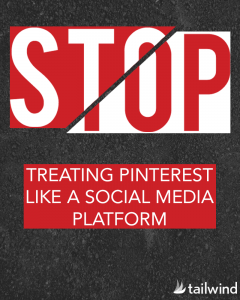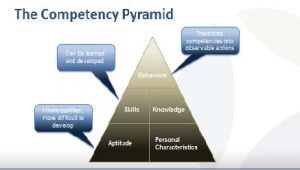Martech innovations have created hundreds of little islands of strategy, tactics and data.
Most marketers love martech tools. They save time, improve campaign performance and allow you to complete many additional tasks you would never have been able to achieve without their automated capabilities. However, there is a problem. No single tool does everything.
We have too many tools today, but often, they don’t play nicely together. This creates a sticky problem: How do we get multiple tools to work in tandem?
Why so many tools?
As a marketer, I want to answer this question by simply saying, “We do a lot of work!” It’s true. The scope of activities in a typical marketing department is huge. Accounting doesn’t have to deal with multiple systems for processing invoices, yet marketers often run campaigns across several social media platforms, each with specific requirements to implement and make them effective.
Equally, the last major innovation in accounting was double-entry bookkeeping, which emerged seven hundred years ago. Social media didn’t emerge until roughly 30 years ago. The first marketing automation system (Eloqua) was launched 25 years ago. Data protection hit us less than 10 years ago when GDPR was published in 2016. No wonder that marketers and martech companies can’t keep up.
The change of behavior during the pandemic, from work-from-home and hybrid working to the increased use of self-directed research rather than talking to salespeople, has fueled a boom in marketing technology as companies fight to reach their respective audiences in a new world. This has led to more tools being developed and purchased, making the martech stack ever bigger but less integrated. Today it’s probably more accurate to talk about a martech “pile” than a stack.
The rapid changes and fragmented channels we use for marketing make it ideal for innovative start-ups to create solutions for particular marketing challenges. Although larger systems are integrating more and more features, it’s simply not possible to have one solution for all your martech needs.
The problem with innovative martech
Martech innovations are wonderful: there are many different tools that all save time and make campaigns more effective. But they are also terrible because they create hundreds of little islands of strategy, tactics and data, making it difficult to maintain a consistent view across any organization’s marketing activities.
Integrations are often one of the first things I check when looking at a new martech tool: how can it integrate with our current stack? Sometimes, I can link solutions, but all too often, the best-in-class solution doesn’t fit neatly alongside other martech solutions. This results in most marketing teams having to deal with many different tools that act as silos, preventing a single overall view.
Frankly, this is unacceptable. But I can’t really blame the vendors. If you are an incumbent, there is often little benefit in offering integration to a start-up trying to build a business that could reduce your market. On the other hand, smaller companies are typically focused on innovations that improve performance, not integrations that are time-consuming and costly to develop.
Today’s marketing glue
Integrating your marketing stack is not an easy task. Most people use multiple solutions to share data to enable simple campaign setup and integrated reporting. One of the most common integration platforms is Salesforce. Its dominance, particularly in the enterprise market, makes it an obvious early choice to build an integration.
But this isn’t necessarily the best solution for everyone. In some ways, it makes sense to integrate much of the marketing stack using a CRM, but if we are aiming for top-of-the-funnel awareness and perception changes — without any contact data — prioritising a CRM may be the wrong choice.
When it comes to reporting, some tools are specifically designed to report across multiple platforms. But they tend to be focused on a specific area of marketing and are, therefore, just bigger silos.
Salesforce isn’t the only solution out there. Many different “middleware” solutions move data from one system to another. Among the most widely used martech tools in the world is probably Zapier. It’s a great tool for moving data from one system to another (e.g., when someone registers on a webinar platform, the data will be copied to your CRM and/or marketing automation platform). While it solves so many problems, why should we have to do all this copying?
In many cases, it’s even worse. Excel or CSV is perhaps the most popular marketing file format as marketers struggle with systems that won’t share data. Data warehousing is another solution where computer programmers and data scientists dump all the information they can from as many systems as possible and try to make sense of it with complex tools such as Tableau. Tableau works, but in all seriousness, why are tools supposed to make our lives easier and result in IT pros being seconded to marketing teams?
How do we get out of this sticky mess?
Martech companies have got us into this mess. A marketing stack should be a set of tools that build on each other but have instead become a jumble of independent, siloed software. It’s time to fix the problem.
Different martech solutions talk to other systems through something called an API. This is simply a way for third-party software to get data out of a system. It should be easy to get data in and out and, therefore, integration shouldn’t be a big deal. Unfortunately, martech vendors screw things up in two major ways.
Firstly, many vendors charge high prices for the API or only provide access at the highest pricing tiers. Your data should be your data. But in the world of martech, you only get to access your data outside of the vendor’s system if you are paying big money. That’s just wrong.
The other major problem is that there is no compatibility between different APIs. Let’s look at something that should be simple: what do you call the first name in a contact record?
- Salesforce uses “FirstName.”
- Hubspot “firstname.”
- Constant Contact “Firstname.”
Really? There is zero commercial benefit in having this incompatibility. If you want to share data with these CRM systems, you need to write three different integrations with three different ways of writing “firstname.”
This is just the start of the list of pointless incompatibilities that mean that most software engineers who write marketing APIs have pulled clumps of their hair out with frustration. Capital letters really matter when computers talk to each other.
The solution is to make it easier to interface between different systems. Why should we have such different ways of talking to systems? Why not have one standard approach so that if, for example, a webinar system interfaces with one CRM system, it can interface with them all?
Overnight, we’d increase the number of integrations between different tools in our martech stack and we’d free up clever developers to spend more time making our lives easier rather than writing code for different APIs that make our lives more difficult.
It’s going to take someone brave to start the ball rolling. There is some benefit in having your own API, as integrations will lock people in (although — newsflash — in the world of CRM, only the giant Salesforce really has this benefit). And there is probably a lot of ego built around having some small feature different from competitors. But the whole situation is dumb. Having some common standard will save marketers time and money, so why not set it?
Let’s hope that marketing software companies recognize that we buy their products for their capabilities, not how they capitalize “firstname” in their API. They may think it’s inconsequential and may even see it as a competitive differentiator. Well, it’s neither.
The commercial benefits are minimal at best, and I suspect a lack of forethought is one of the factors that has enabled this to continue. I’d love to see standardization and, consequently, a magical improvement in the ability to integrate different tools in our martech stacks, but I’m not holding my breath.
The post The sticky problem of martech integration appeared first on MarTech.
MarTech(11)
Report Post








